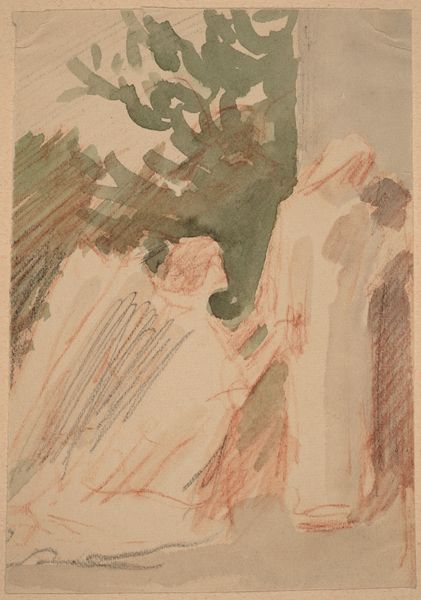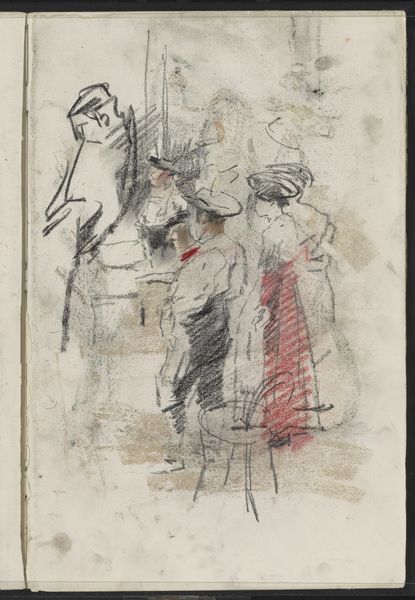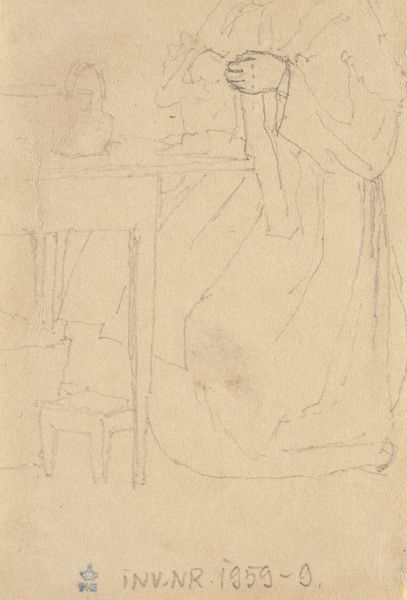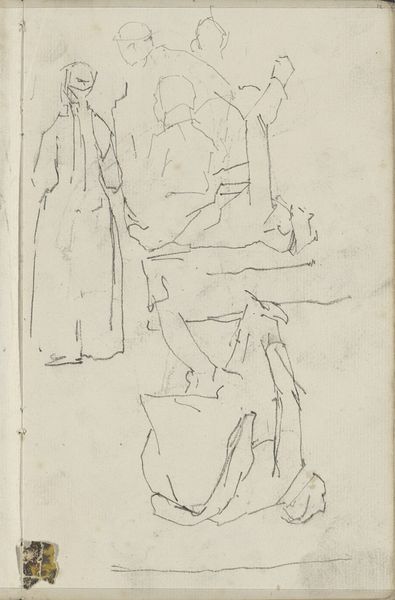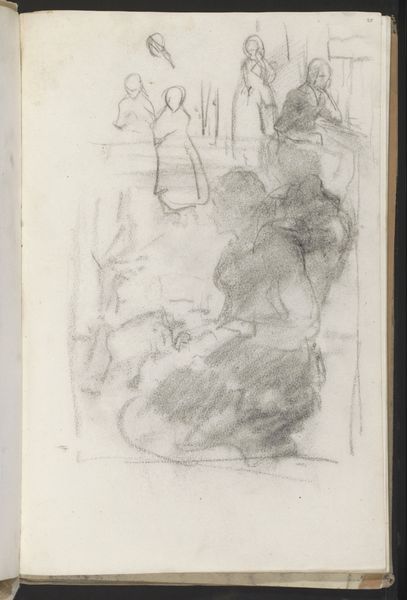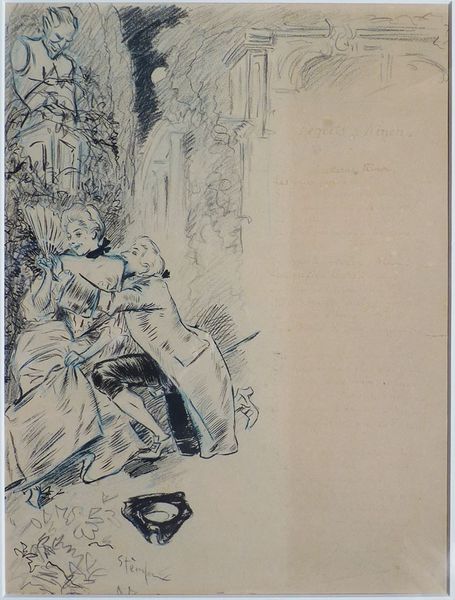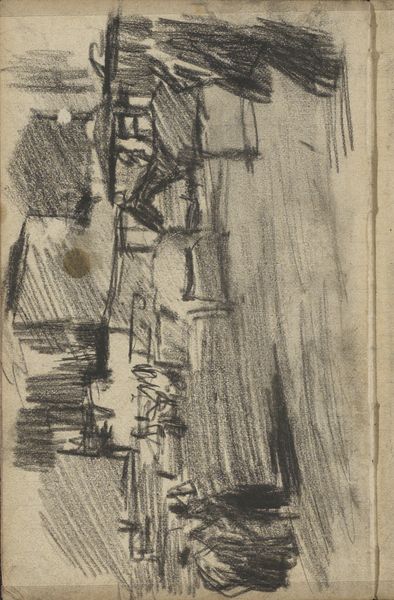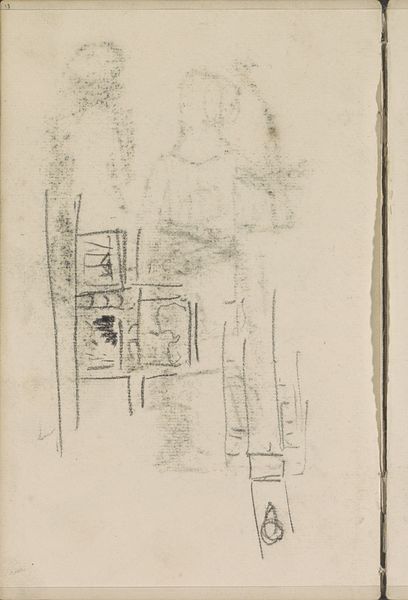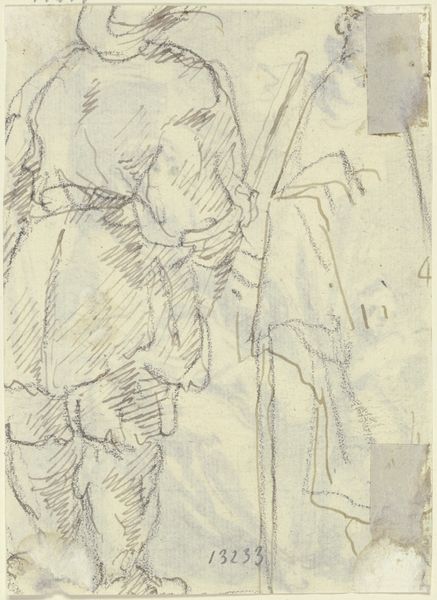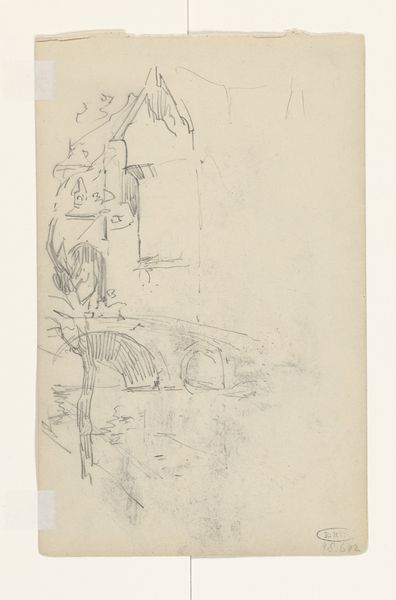
Dimensions: sheet: 8.4 × 6.1 cm (3 5/16 × 2 3/8 in.) mount: 46.1 × 30.2 cm (18 1/8 × 11 7/8 in.)
Copyright: National Gallery of Art: CC0 1.0
Curator: At first glance, this watercolor sketch evokes a quiet, contemplative mood. Its delicate washes of color feel almost dreamlike. Editor: That’s Charles Sprague Pearce's "Study for a Panel," made sometime between 1890 and 1897. It exemplifies a fascination of the period for classical and allegorical scenes imbued with impressionistic light and color. Curator: I am intrigued by this almost ethereal representation of the female form as almost divine. And, notice the architecture here; it creates a kind of liminal space. The architecture could also be the architecture in a sacred garden. It may reference to enclosed convents of women who had few, if any rights in society. I feel she might be praying at an altar. What would you say about it as it speaks to woman's roles? Editor: Well, thinking about its late 19th-century context, such figures can become associated with the limitations placed upon women. She stands adjacent to a gate and structure suggesting enclosure; consider the ways in which this "Study" might reflect, intentionally or not, societal expectations and confines. Curator: Yet the liminality almost invites a kind of rebirth, where women and the landscape surrounding it are almost the same, speaking about and to a common humanistic bond. There's a definite classical simplicity to the woman's gown and draped fabric, offering continuity with antiquity, almost an expression of enduring values. Editor: And to move that forward, thinking about women's historical status, consider the limited career opportunities open to them then—making art almost a refuge and a space of empowerment or protest through which female creativity was funneled when politics, social standing and economics would otherwise not permit free expression. Curator: Beautiful point—bringing in the idea of art-making as protest against a society which repressed women through many different aspects. That makes one consider other layers to what appears, at first sight, an unremarkable watercolor study. Editor: Precisely; it makes you think more about art production happening at that time in response to those oppressions.
Comments
No comments
Be the first to comment and join the conversation on the ultimate creative platform.
